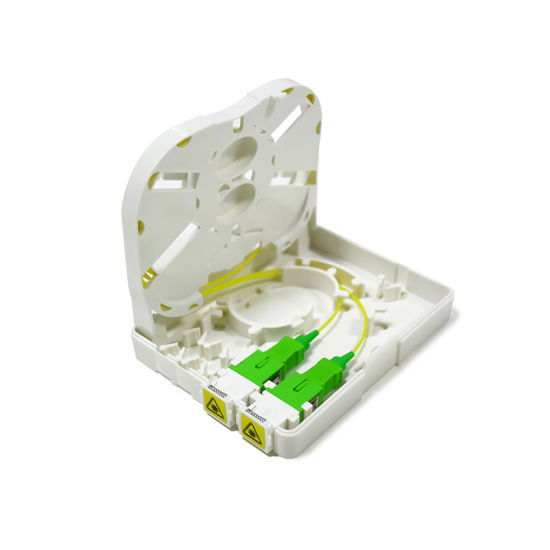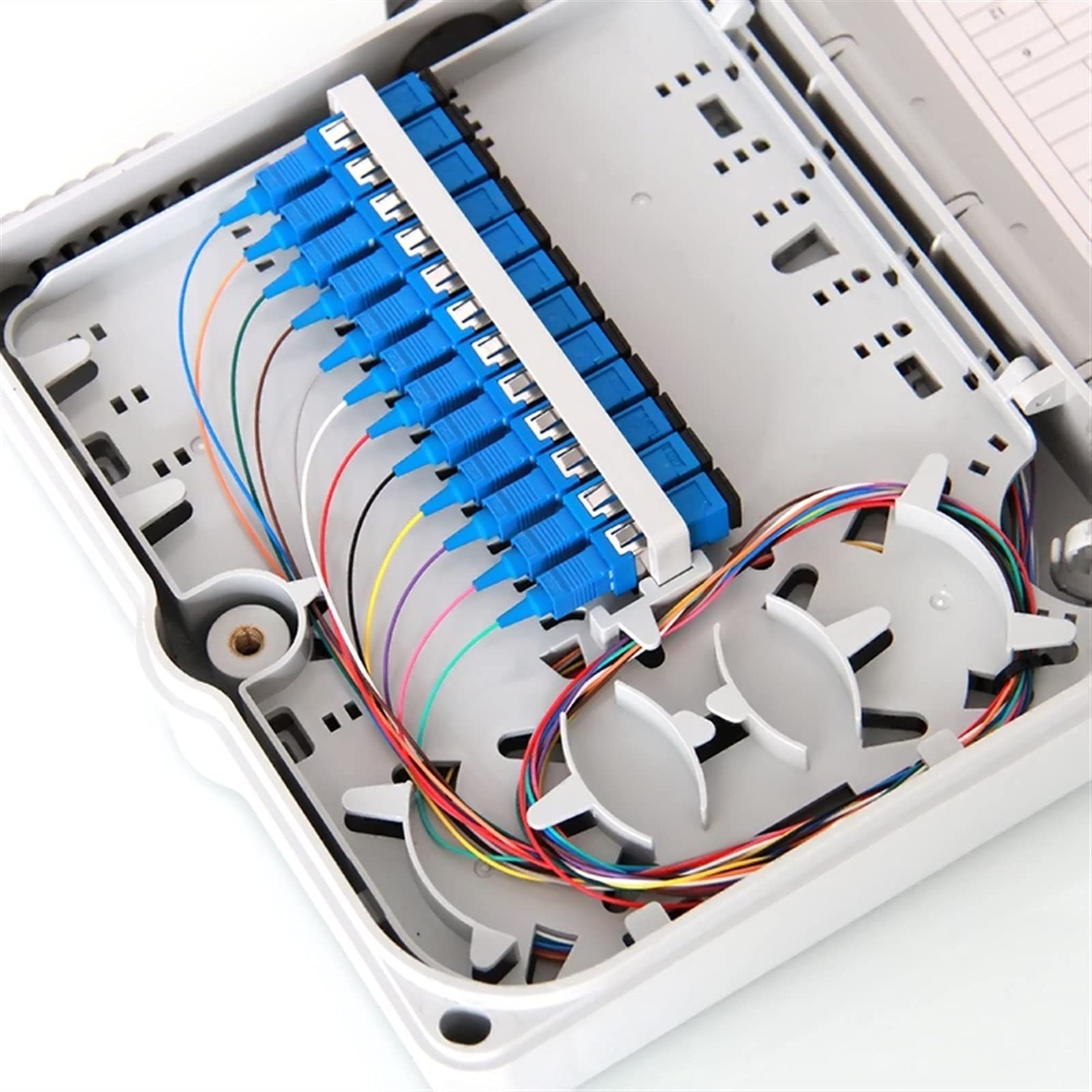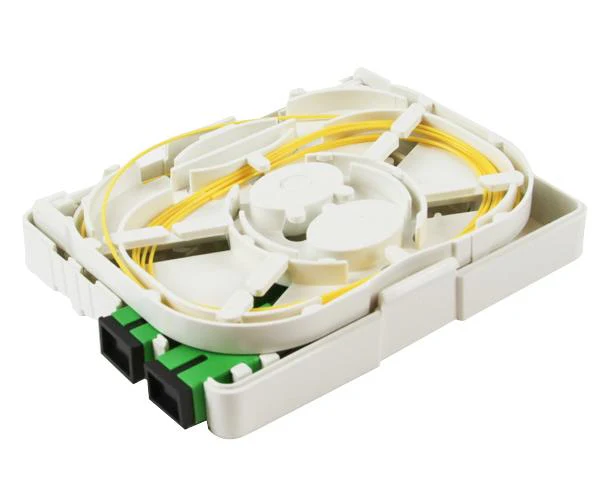2024 Guide: Understanding FTTH Terminal Box and Optical Accessories

FTTH Technology Overview
Importance of FTTH Terminal Boxes
FTTH terminal boxes, also known as fiber to the home terminal boxes or FTTH distribution boxes, are crucial components in FTTH networks. These boxes serve as the connection point for optical accessories and end-users, ensuring the protection and organization of fiber optic cables. Additionally, optical accessories such as splitters and connectors play a significant role in guaranteeing high-speed internet connectivity for end-users.
Terminal Box Importance
FTTH terminal boxes, also referred to as fiber termination boxes or FTTB terminal boxes, are essential for the seamless operation of fiber to the home (FTTH) networks. These boxes serve a dual purpose in ensuring the efficiency and functionality of the network.
Functionality of FTTH Terminal Boxes
Protection and Organization: One of the primary functions of FTTH terminal boxes is to provide a secure and organized housing for fiber optic cables. By protecting these delicate cables from environmental factors and physical damage, the terminal box ensures the integrity of the network.
Connection Point: FTTH terminal boxes act as the connection point for optical accessories and end-users. They facilitate the distribution of high-speed internet services by providing a centralized location for connecting optical fibers.
Types of FTTH Terminal Boxes
FTTH terminal boxes come in various forms to cater to different installation requirements.
Wall-Mounted Terminal Boxes: These compact units are designed for convenient installation on walls, offering a space-saving solution for indoor deployments.
Outdoor and Indoor Installation Options: FTTH terminal boxes are available in outdoor-rated enclosures suitable for external mounting, as well as indoor variants designed for placement within buildings.
Understanding these different types of terminal boxes is crucial when planning and implementing FTTH networks to ensure that they meet specific environmental and deployment needs effectively.

Fiber Optic Cable Types
Single-mode Fiber Optic Cables
When considering fiber optic cables for high-speed internet connectivity, single-mode fiber optic cables play a crucial role. These cables are specifically designed for long-distance transmissions, making them ideal for connecting remote areas to the main network hub. The key advantage of single-mode fiber optic cables lies in their higher bandwidth capacity, allowing for the seamless transmission of large volumes of data over extended distances. This makes them particularly suitable for applications where data needs to travel over several miles without any signal loss or degradation.
Multi-mode Fiber Optic Cables
In contrast to single-mode fiber optic cables, multi-mode fiber optic cables are best suited for shorter distances within a network. These cables offer a cost-effective solution for connecting devices and components within a localized area, such as a building or campus environment. While they may not have the same long-distance capabilities as single-mode cables, multi-mode fiber optic cables provide an efficient and economical option for achieving reliable data transmission over relatively shorter distances.
Optical Splitters Role
Optical splitters play a crucial role in fiber optic networks by enabling the efficient distribution of optical signals to multiple streams, thereby facilitating cost-effective network expansion. These devices are essential for dividing the incoming optical signal into several output signals, ensuring that the network can accommodate multiple end-users or devices without compromising signal quality. By providing this capability, optical splitters contribute to the scalability and flexibility of fiber optic networks, allowing for seamless growth and adaptation to changing connectivity requirements.
Functionality of Optical Splitters
Divide Optical Signals: Optical splitters effectively divide incoming optical signals into multiple streams, ensuring that the network can serve numerous end-users or devices simultaneously without sacrificing signal integrity.
Cost-Effective Network Expansion: By enabling a single optical input to be split into multiple outputs, optical splitters offer a cost-effective solution for expanding network capacity without the need for extensive infrastructure upgrades.
Types of Optical Splitters
1x2 and 1x4 Splitters: These are common types of optical splitters that divide the incoming signal into two or four output streams respectively, catering to different network size and capacity requirements.
PLC and FBT Splitter Technologies: Planar Lightwave Circuit (PLC) and Fused Biconic Taper (FBT) are two prevalent technologies used in optical splitters, each with its own unique characteristics and suitability for specific network configurations.

FTTH Advantages
Reliable High-speed Internet
In the realm of fiber broadband technology, FTTH offers a plethora of advantages, with reliable high-speed internet standing at the forefront. The deployment of FTTH ensures consistent and fast internet connectivity, meeting the demands of today's bandwidth-intensive applications. By leveraging fiber to the home infrastructure, users can enjoy seamless access to high-speed internet without experiencing lags or interruptions, thereby enhancing their online experience.
Future-Proof Technology
FTTH represents a future-proof technology that is scalable to meet evolving network demands. As connectivity needs continue to grow, FTTH infrastructure provides the flexibility to adapt and expand without significant overhauls. This scalability not only caters to the present but also enhances property value and attractiveness by offering a robust and adaptable network solution for both residential and commercial settings. Embracing FTTH as a future-proof technology ensures that properties remain competitive in an increasingly connected world.
Terminal Box Significance
The Role of FTTH Terminal Boxes
FTTH terminal boxes, also known as fiber to the home terminal boxes or FTTH distribution boxes, play a pivotal role in modern internet infrastructure. These boxes serve as the central connection point for optical accessories and end-users, ensuring the seamless organization and protection of fiber optic cables. Additionally, they facilitate efficient network expansion and are essential for future-proof connectivity.
Enhancing Efficiency with Optical Accessories
In conjunction with FTTH terminal boxes, optical accessories such as splitters and connectors enhance the efficiency of FTTH networks. These accessories enable the division of optical signals into multiple streams, ensuring cost-effective network expansion without compromising signal integrity. By integrating these optical accessories with terminal boxes, FTTH networks can cater to the evolving demands of high-speed internet connectivity.
Crucial Understanding for Future-Proof Connectivity
Understanding FTTH technology is crucial for ensuring future-proof connectivity. As internet infrastructure continues to advance, familiarity with FTTH terminal boxes and optical accessories becomes increasingly important. This knowledge empowers stakeholders to make informed decisions regarding network deployment, scalability, and adaptability to meet the growing connectivity needs of residential and commercial settings.
See Also
Exploring the Differences Between Single Jacket and Dual Jacket Outdoor Optical Cables
2024 Comparison of FBT vs PLC Splitters: Signal Distribution Performance
Unveiling the Wonders of Preconnectorized Cables for Indoor and Outdoor Cable Structure
About US
Follow Us
AnetFiber company's main products are indoor and outdoor optical fiber cables, outdoor waterproof pre-connected fiber-to-the-home products, PLC optical fiber splitters, optical fiber jumpers and pigtails, MTP®/MPO high-density big data product solutions, optical fiber field quick connectors and research and development molding, injection molding and production of optical fiber distribution boxes, optical fiber chassis cabinets, the market has expanded to the world, Europe, America, Asia, the Middle East and Latin America.
Address
Shenzhen City, Baoan District, Yanluo Street, Tangxiayong Community, Yangyong Industrial Road, Tonggangda New Energy Vehicle Park 406
Contacts
+86 199 2655 3586

